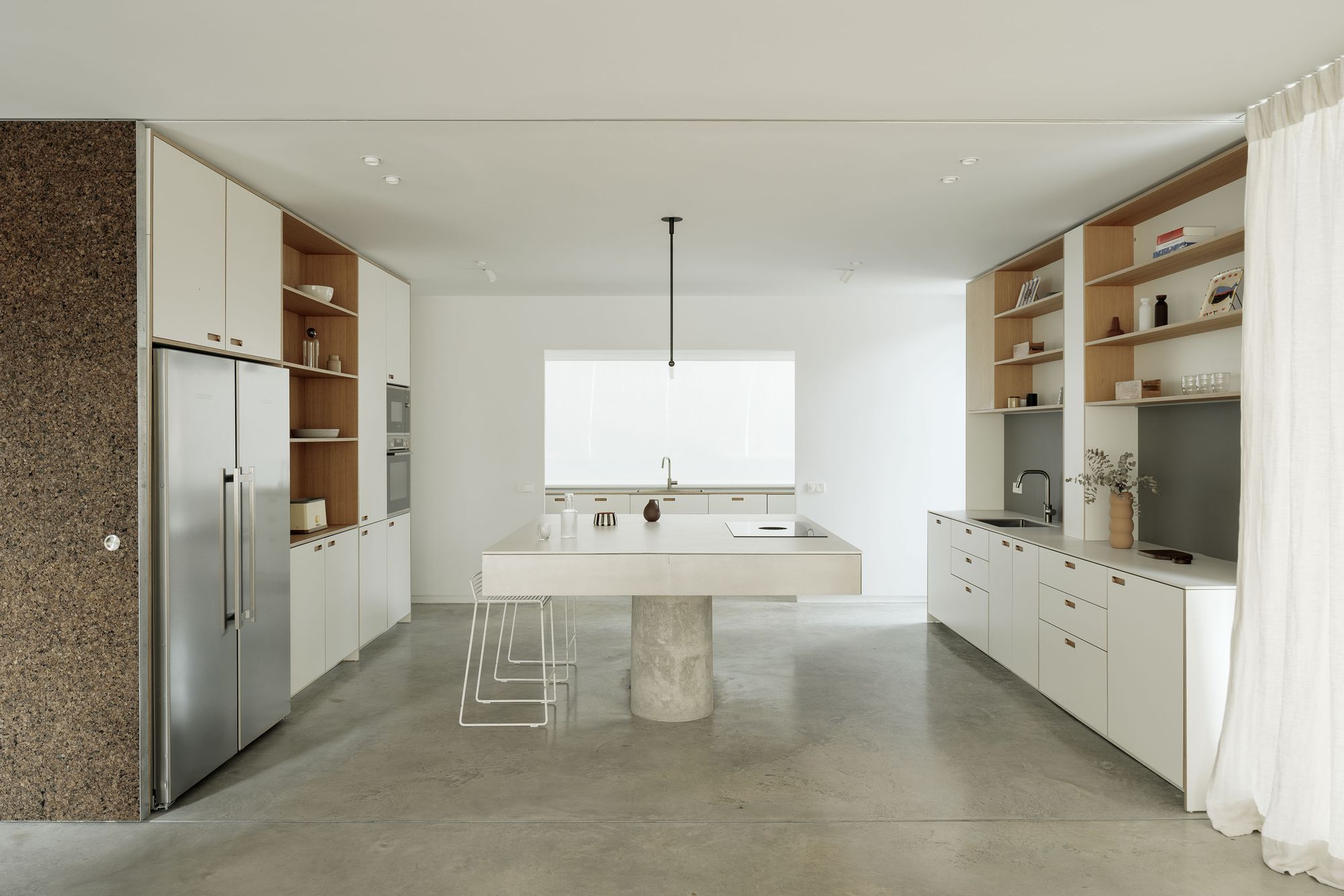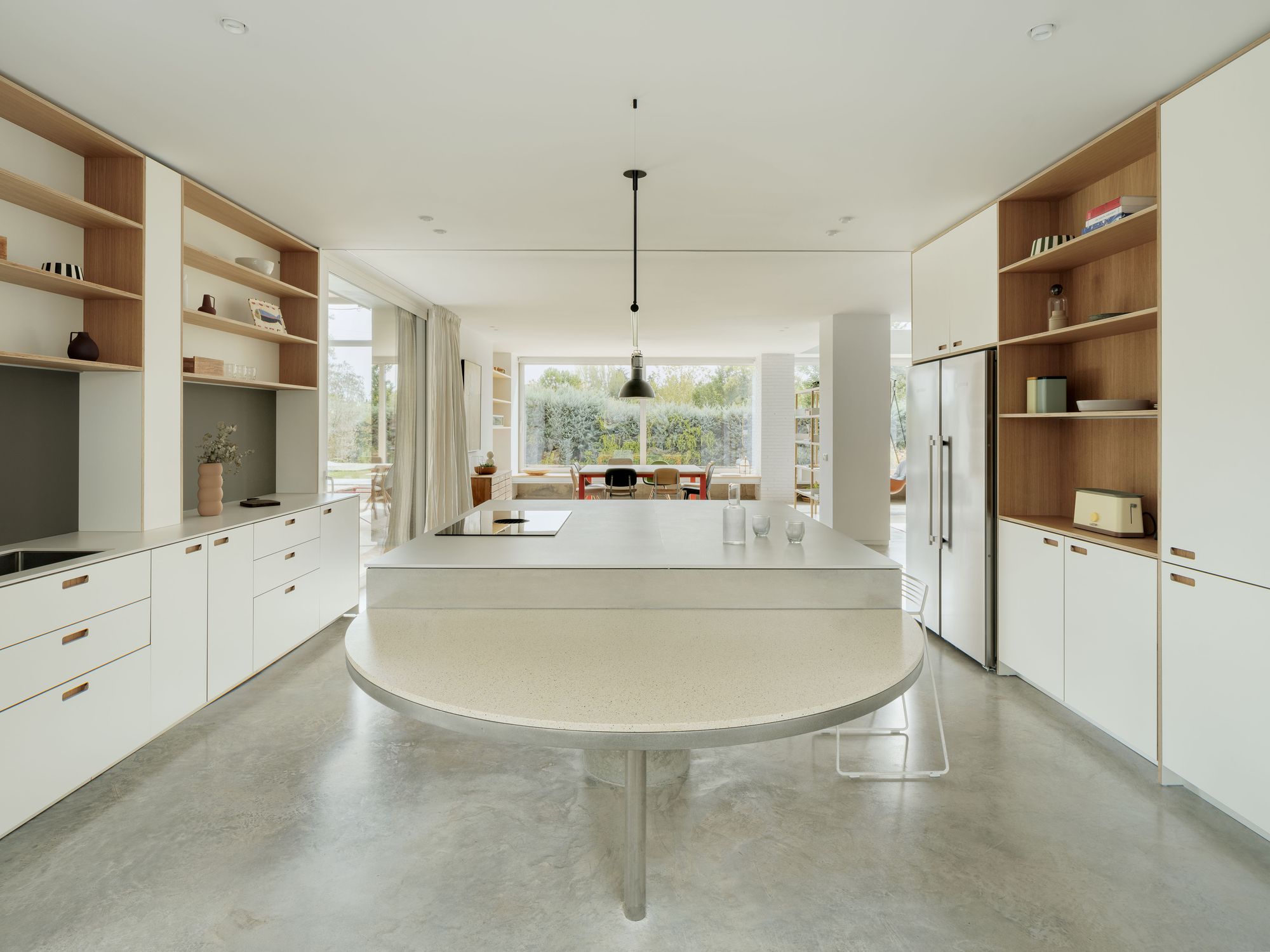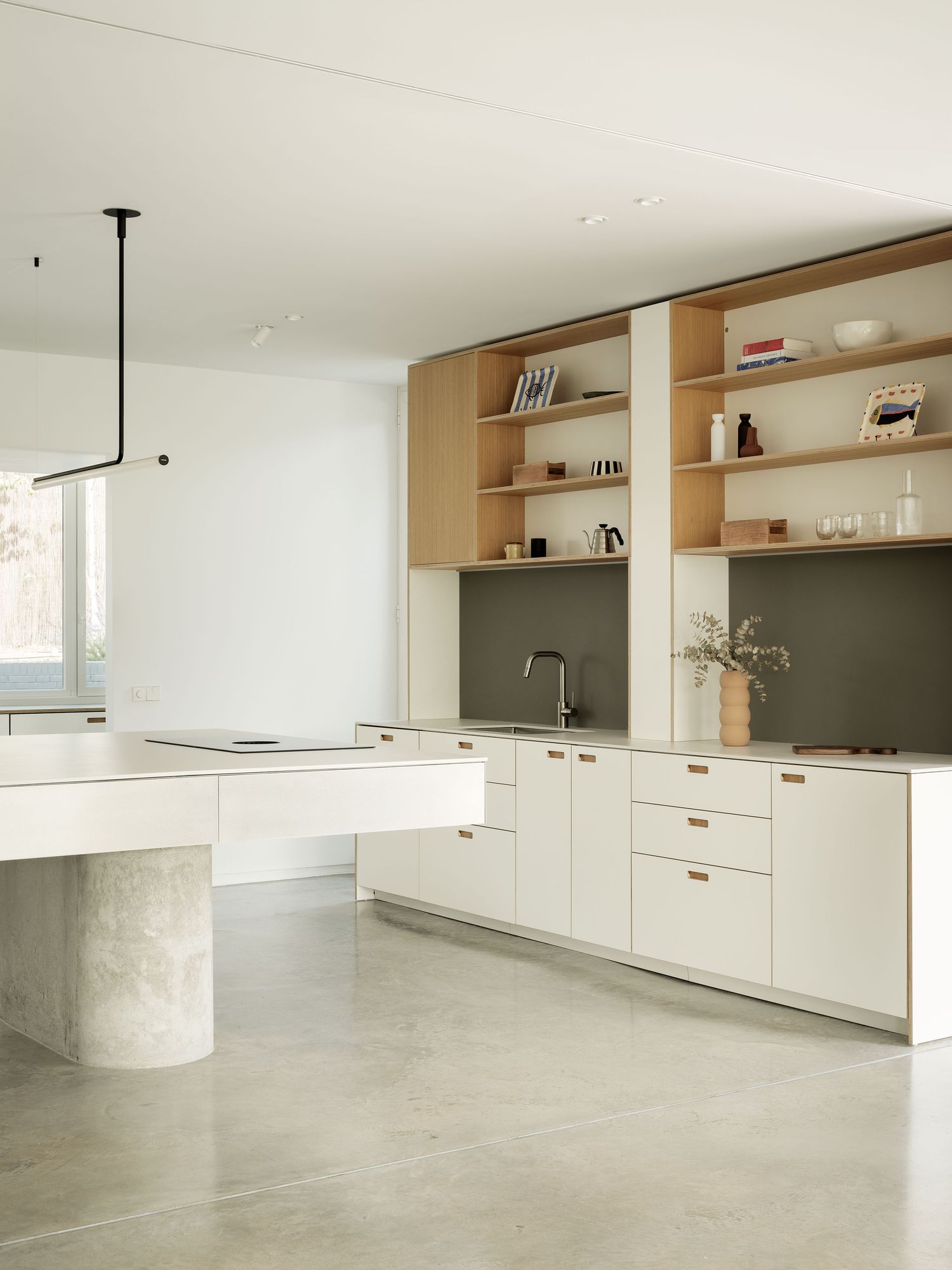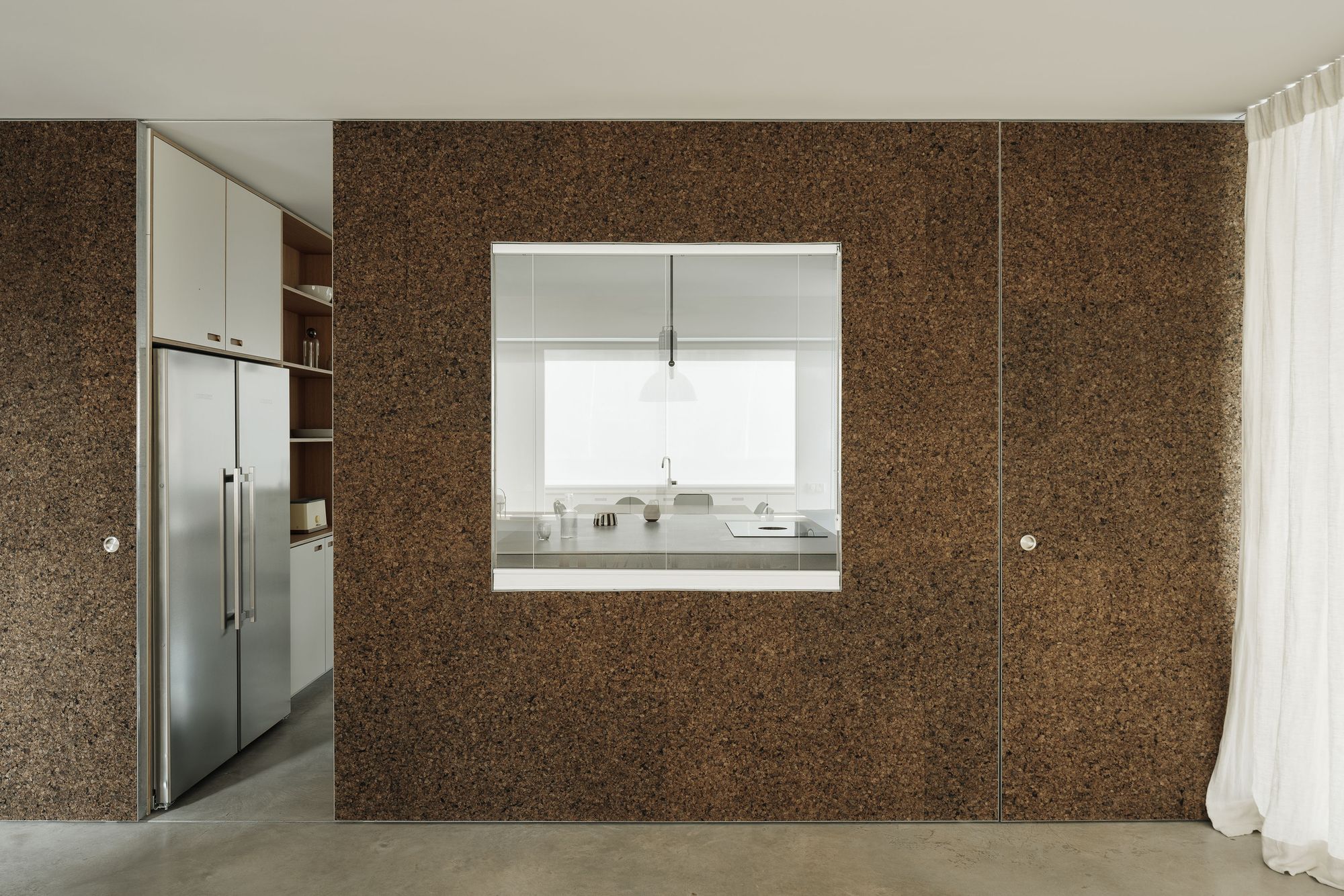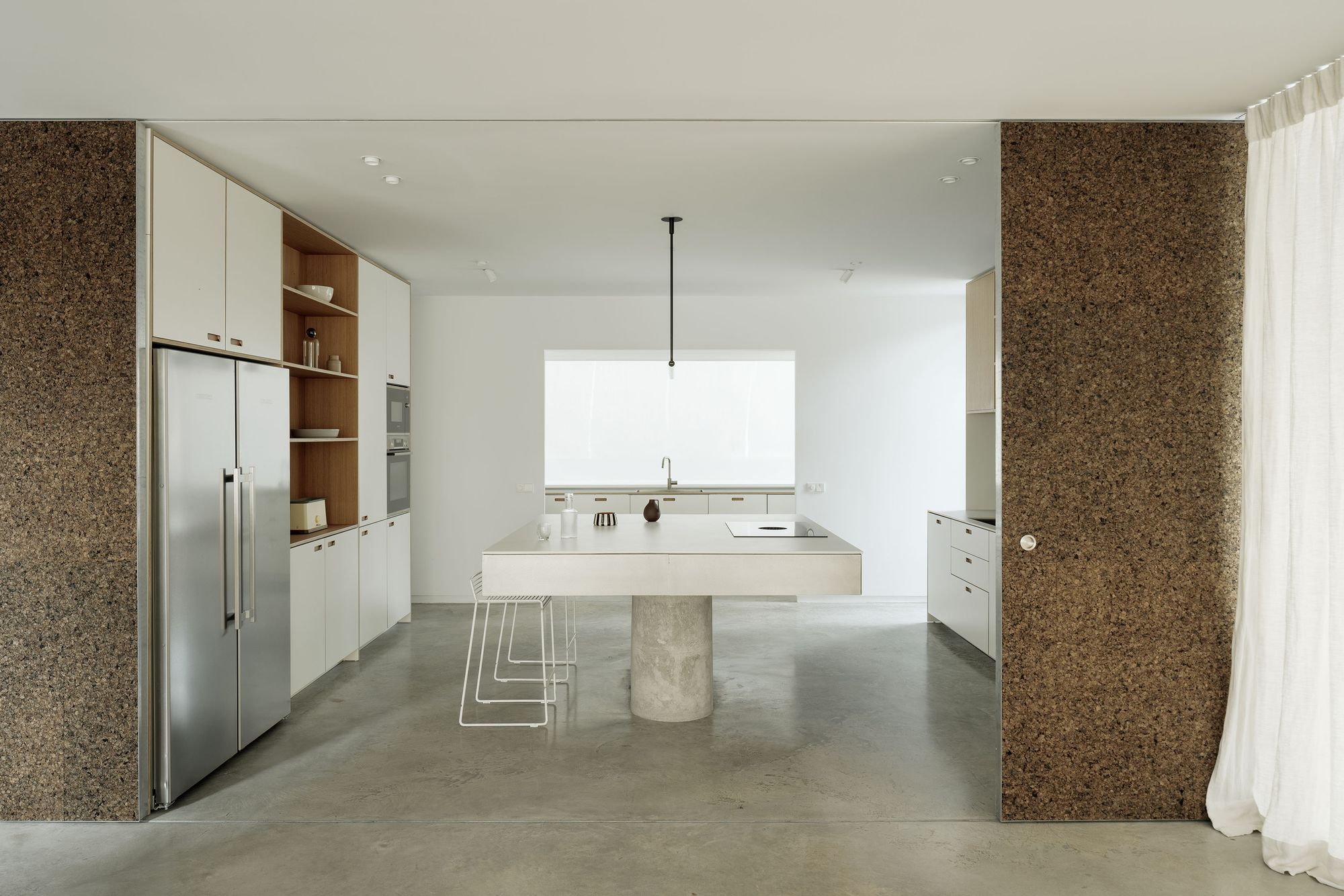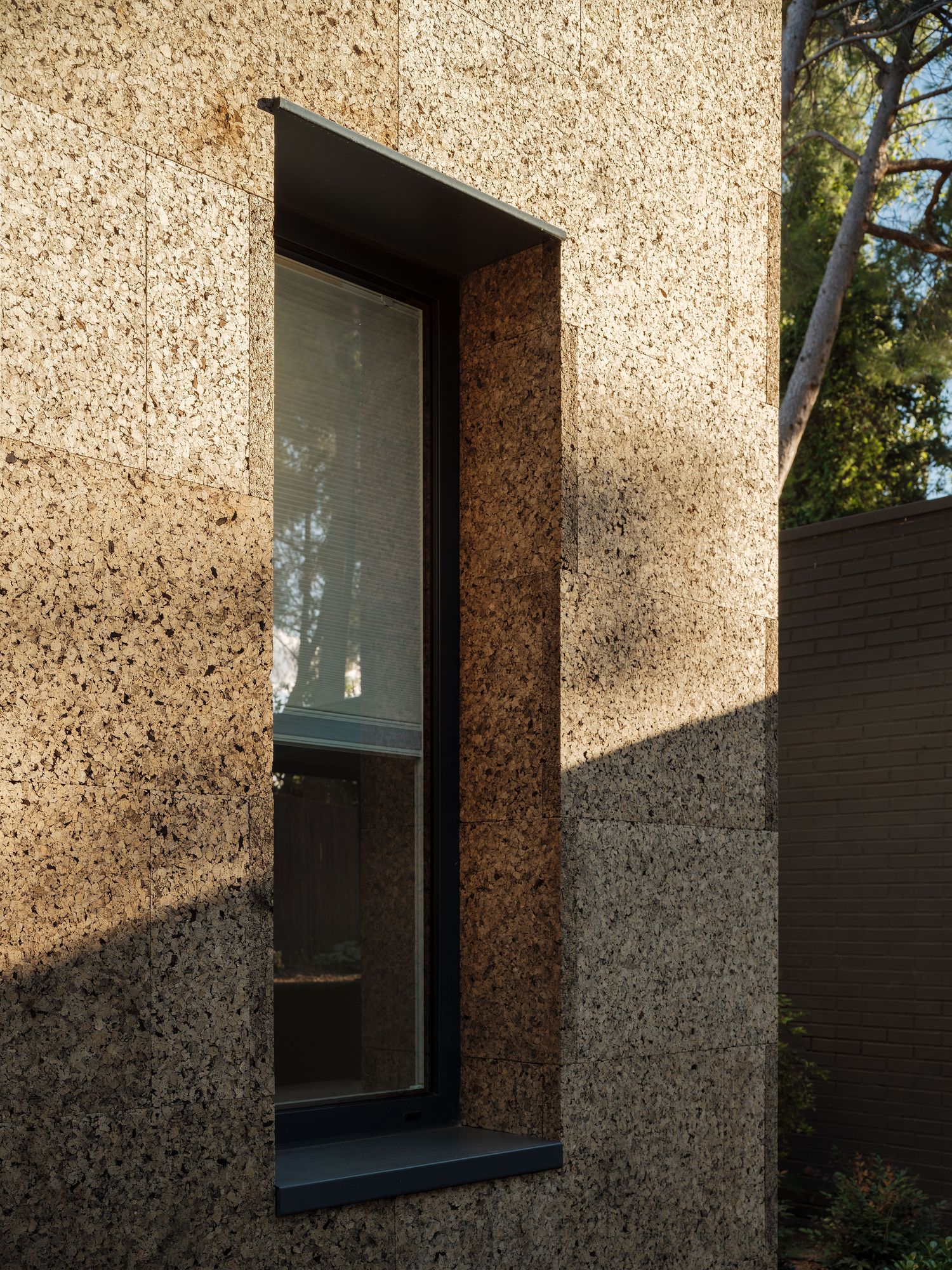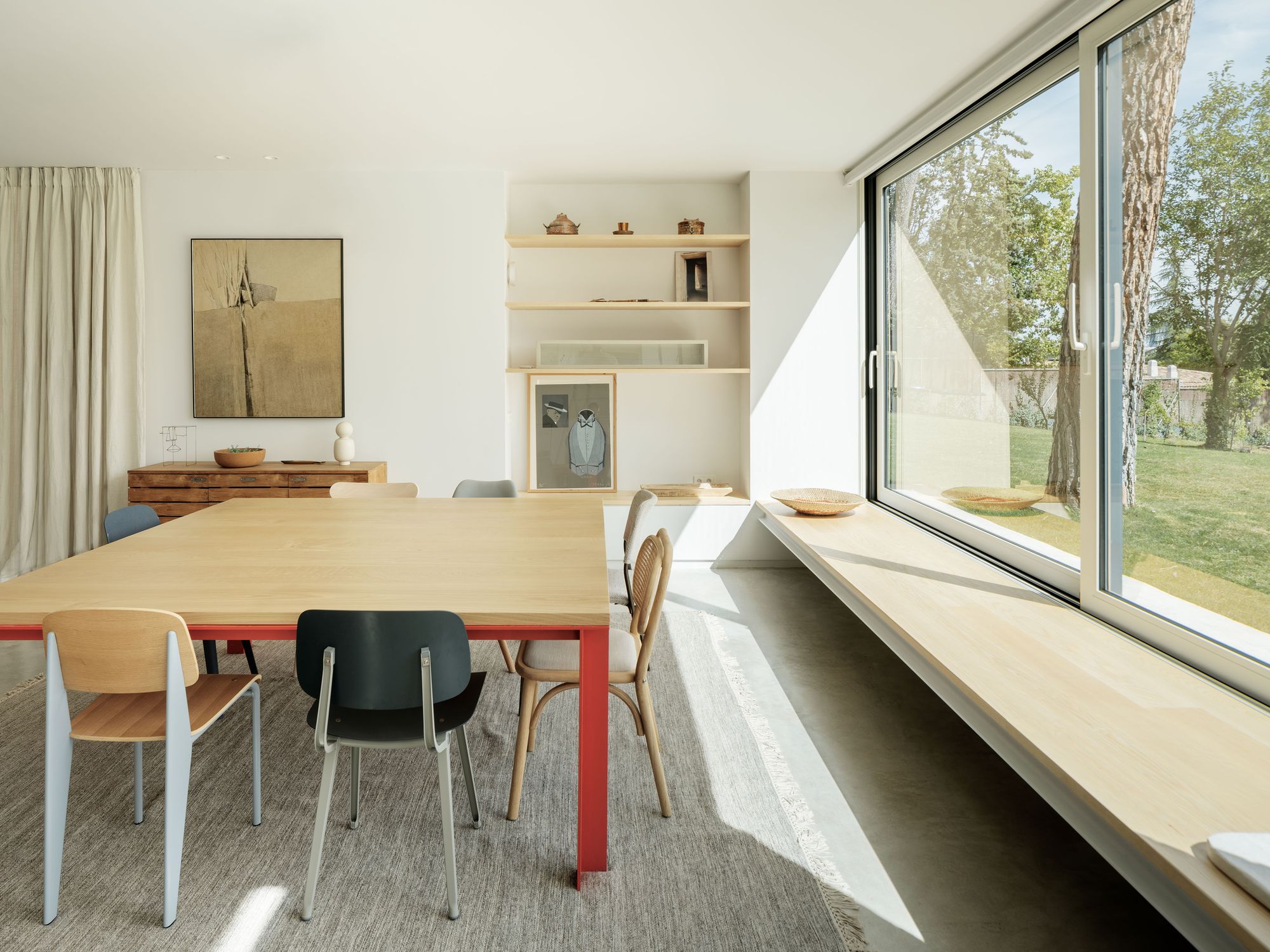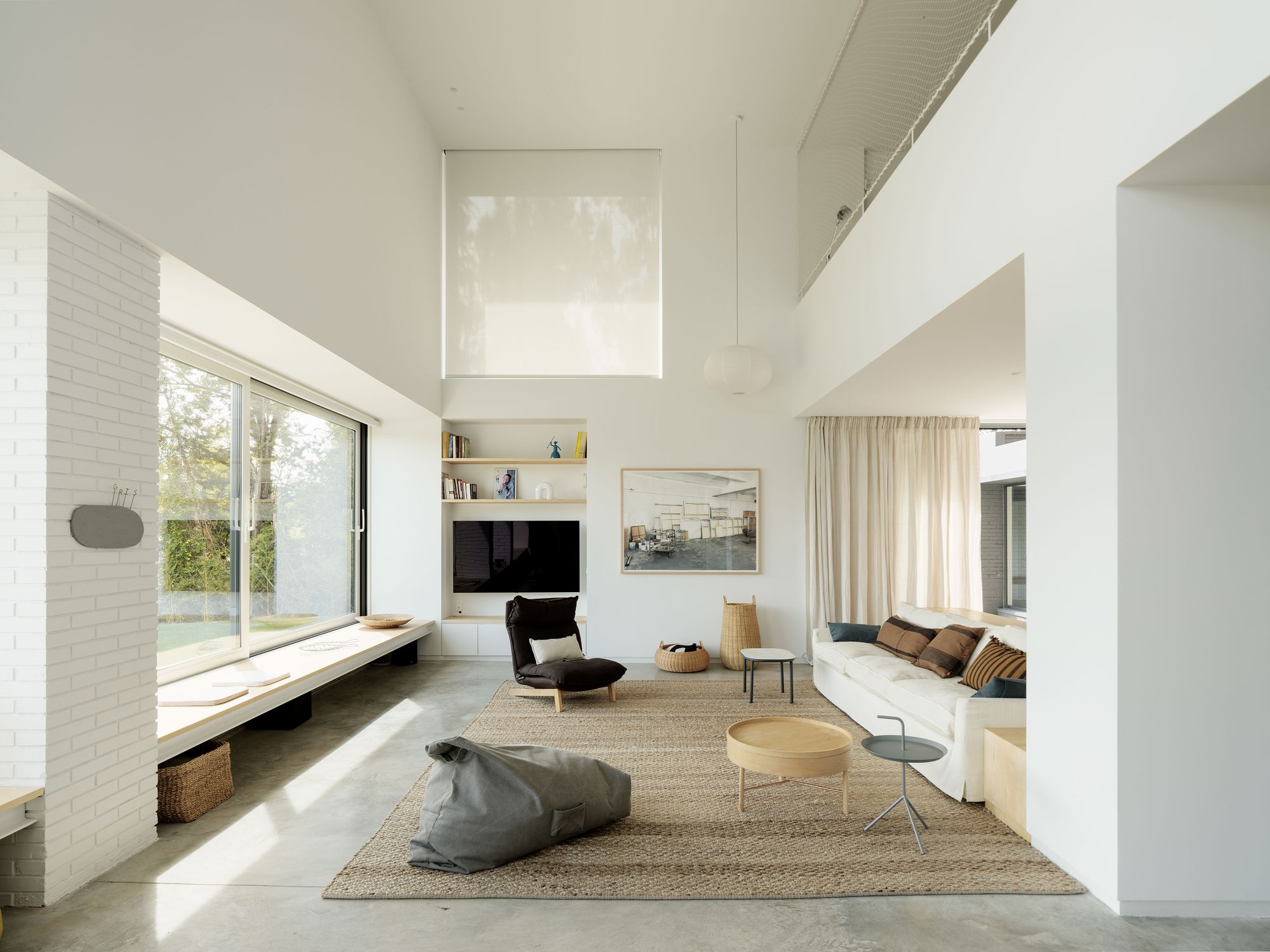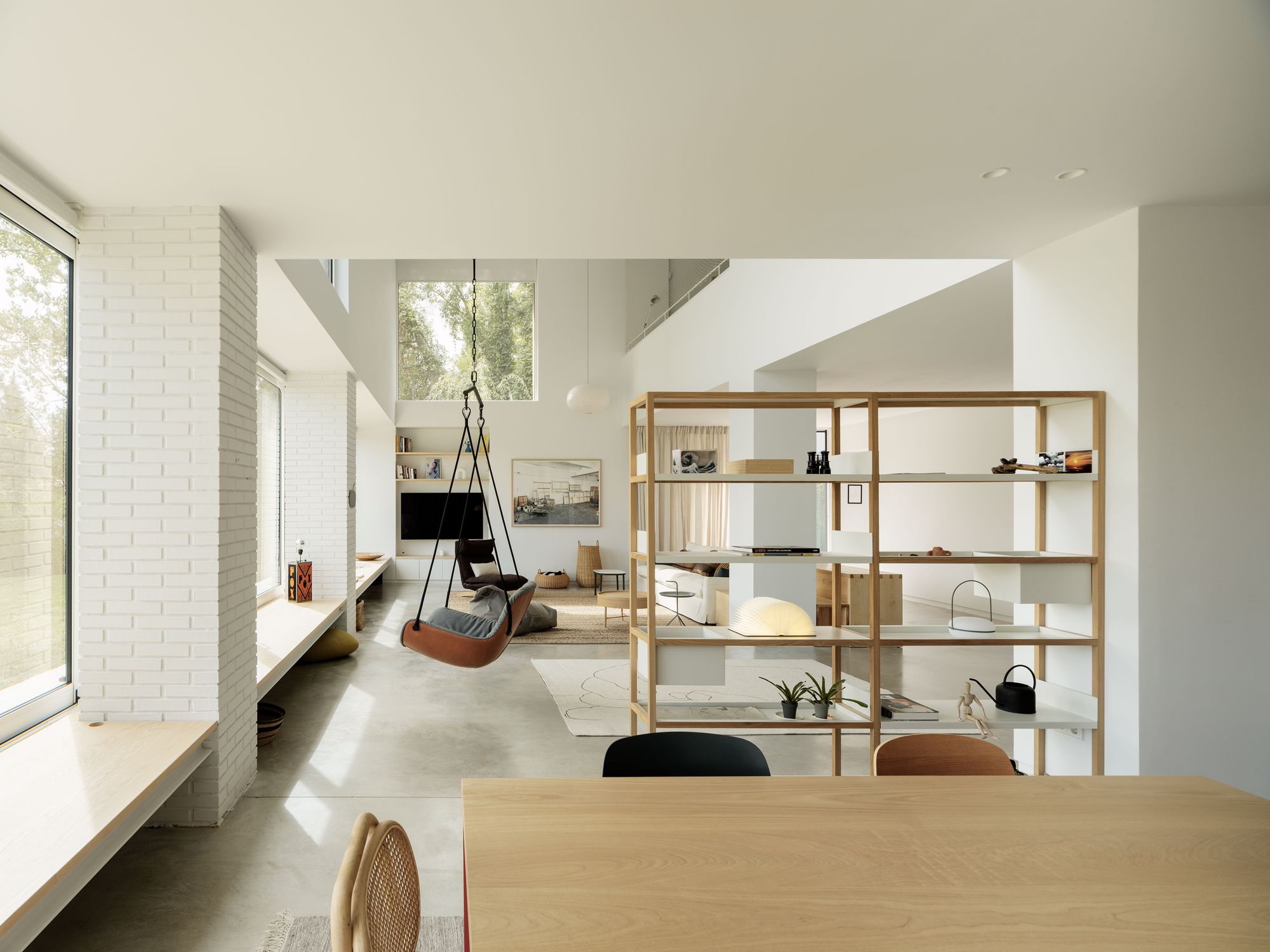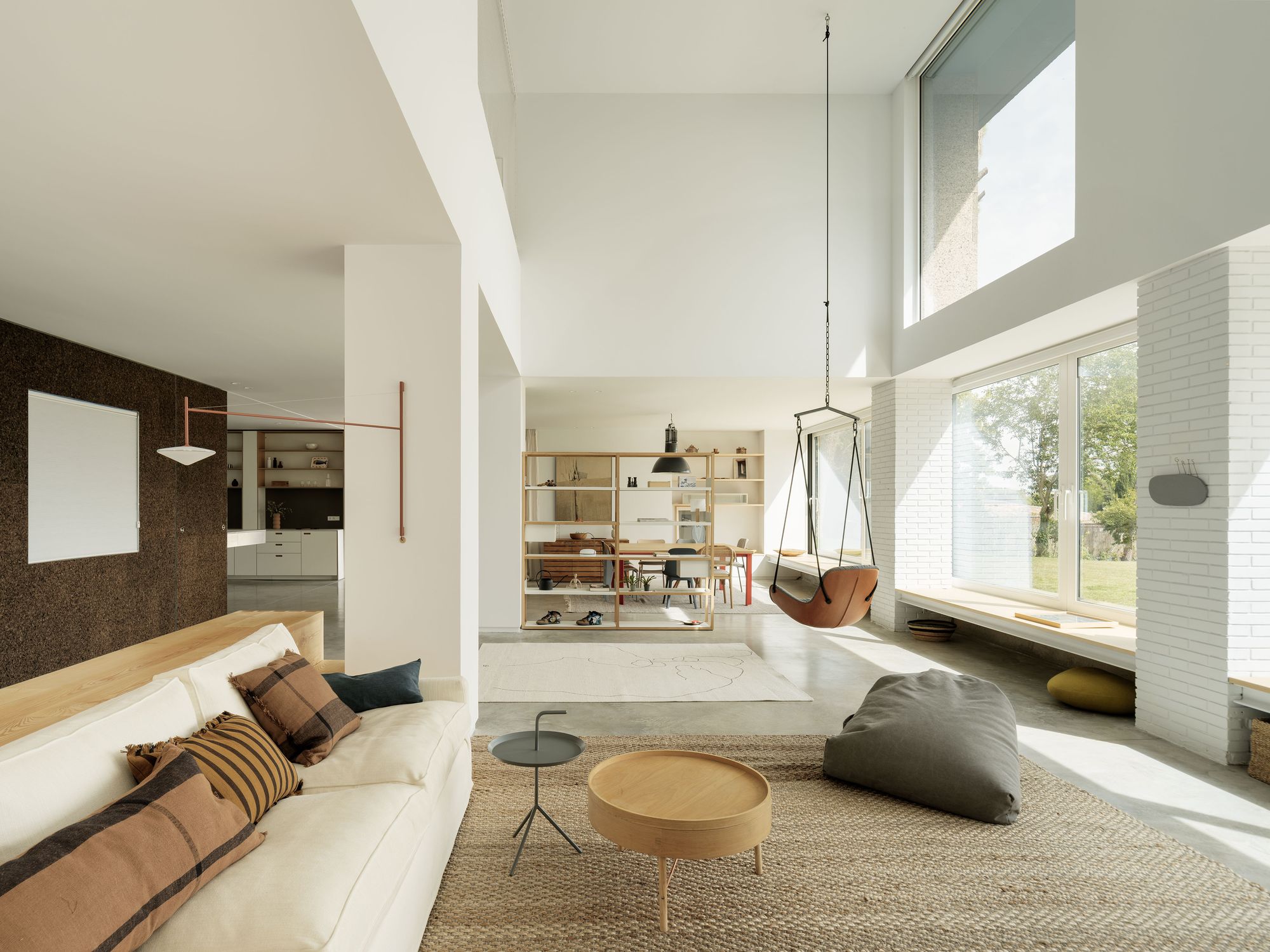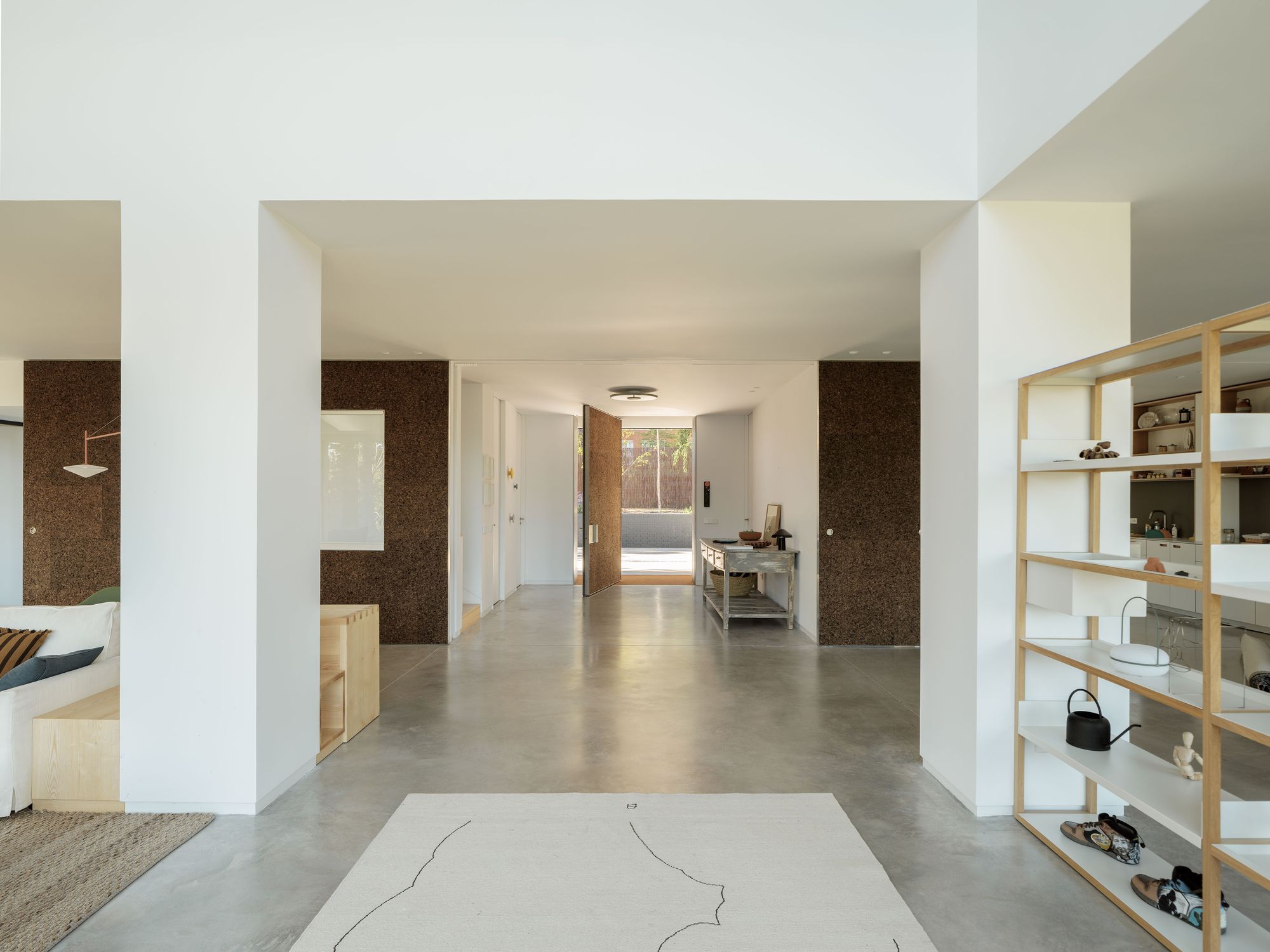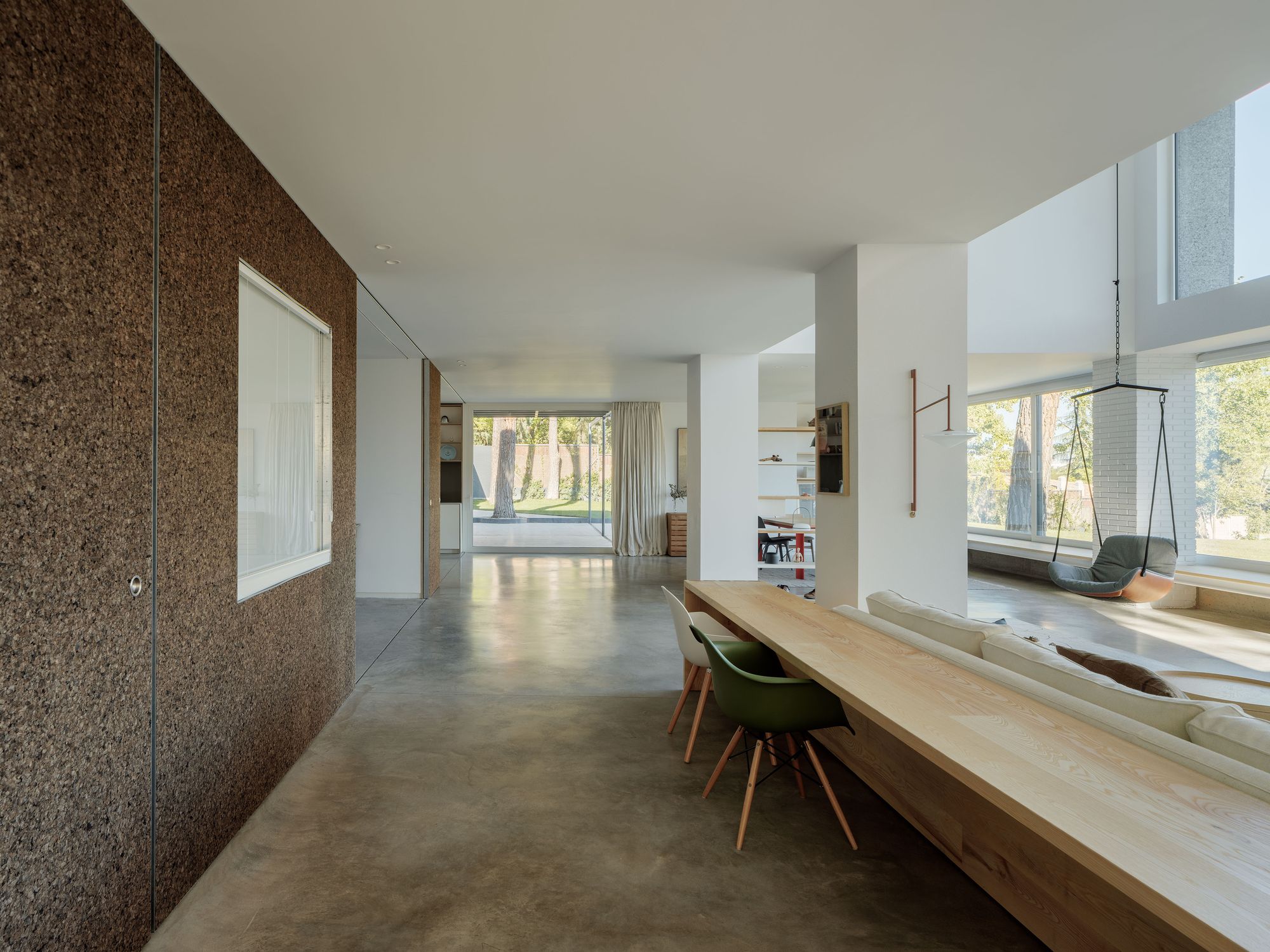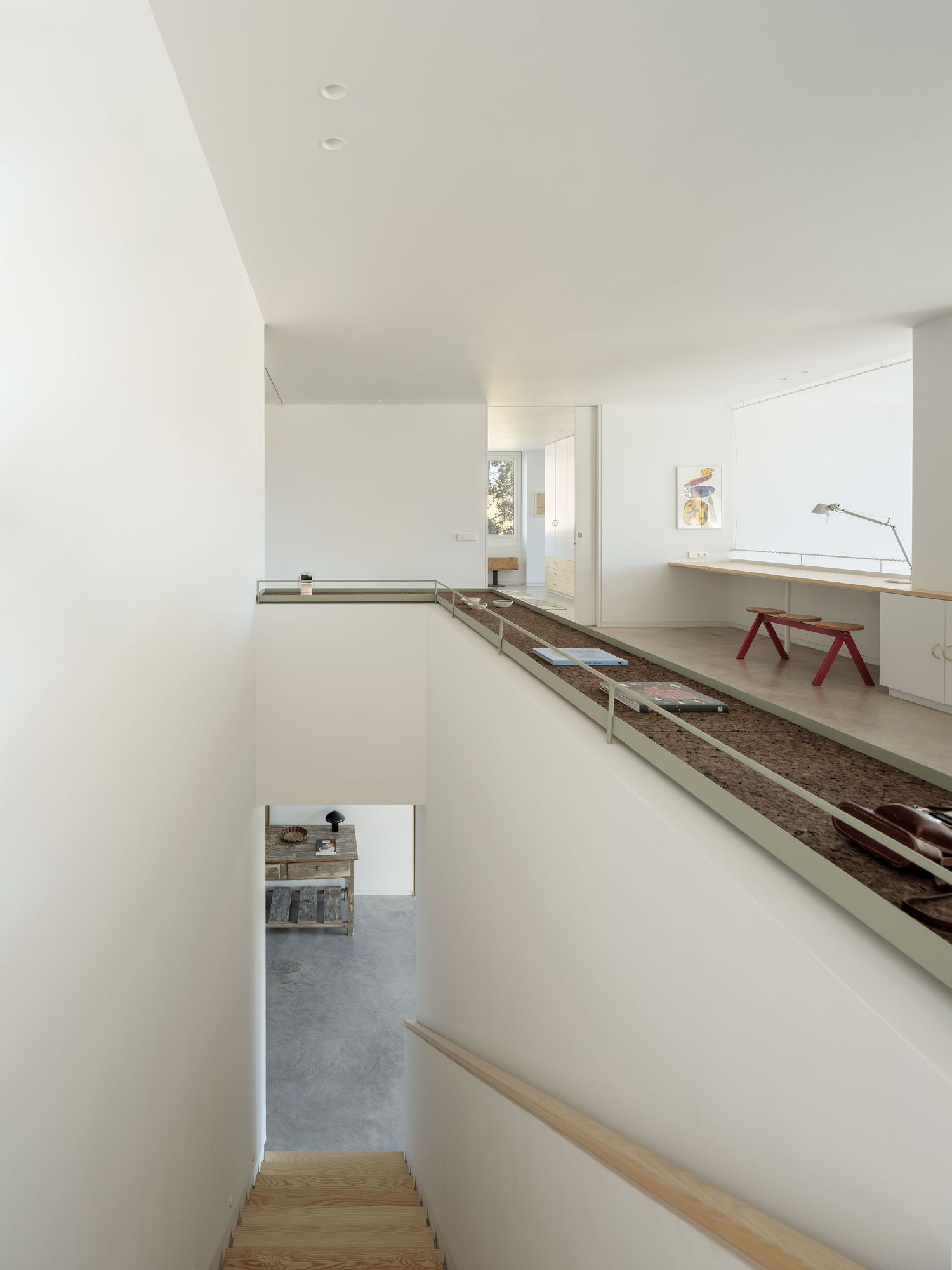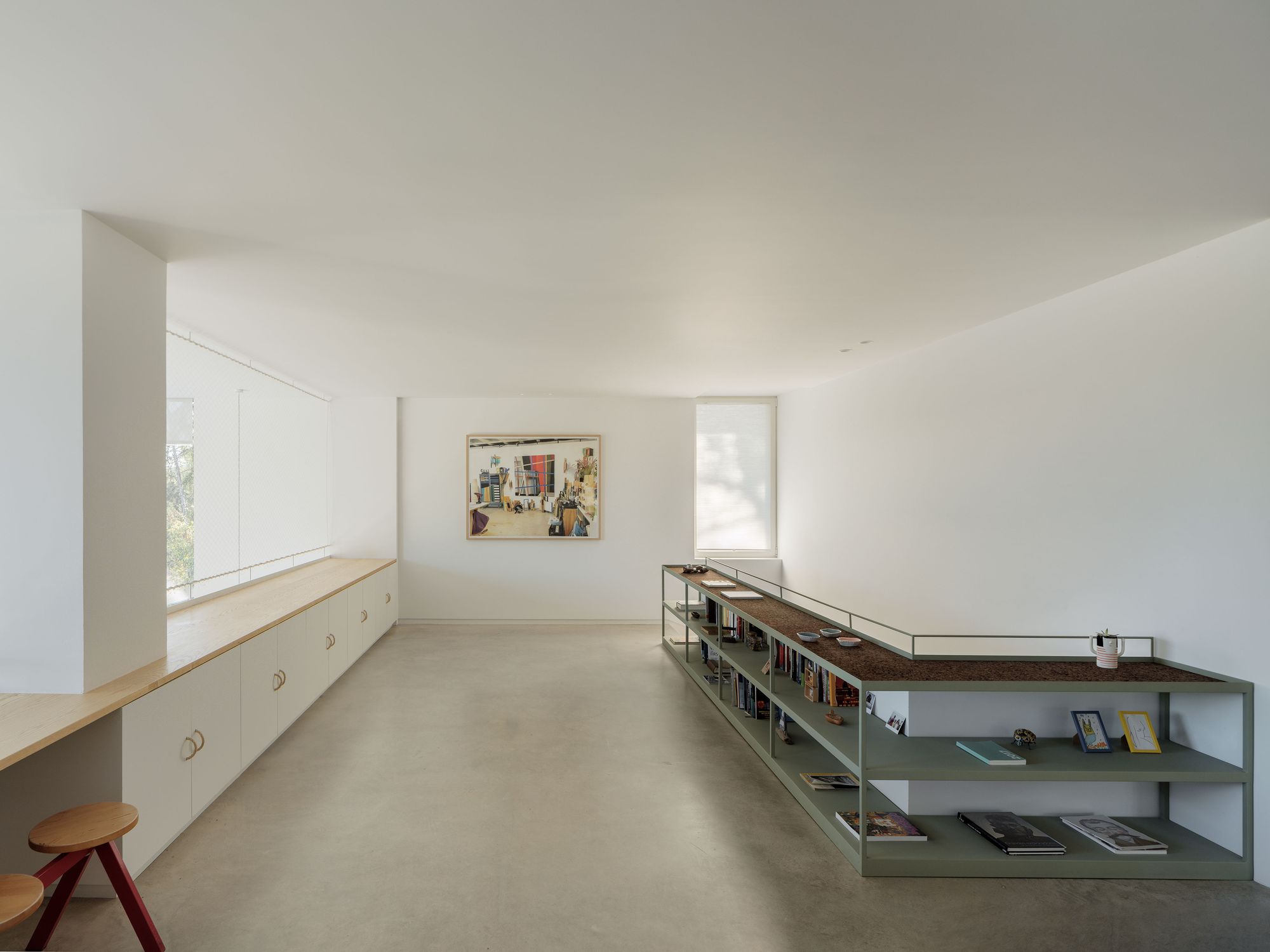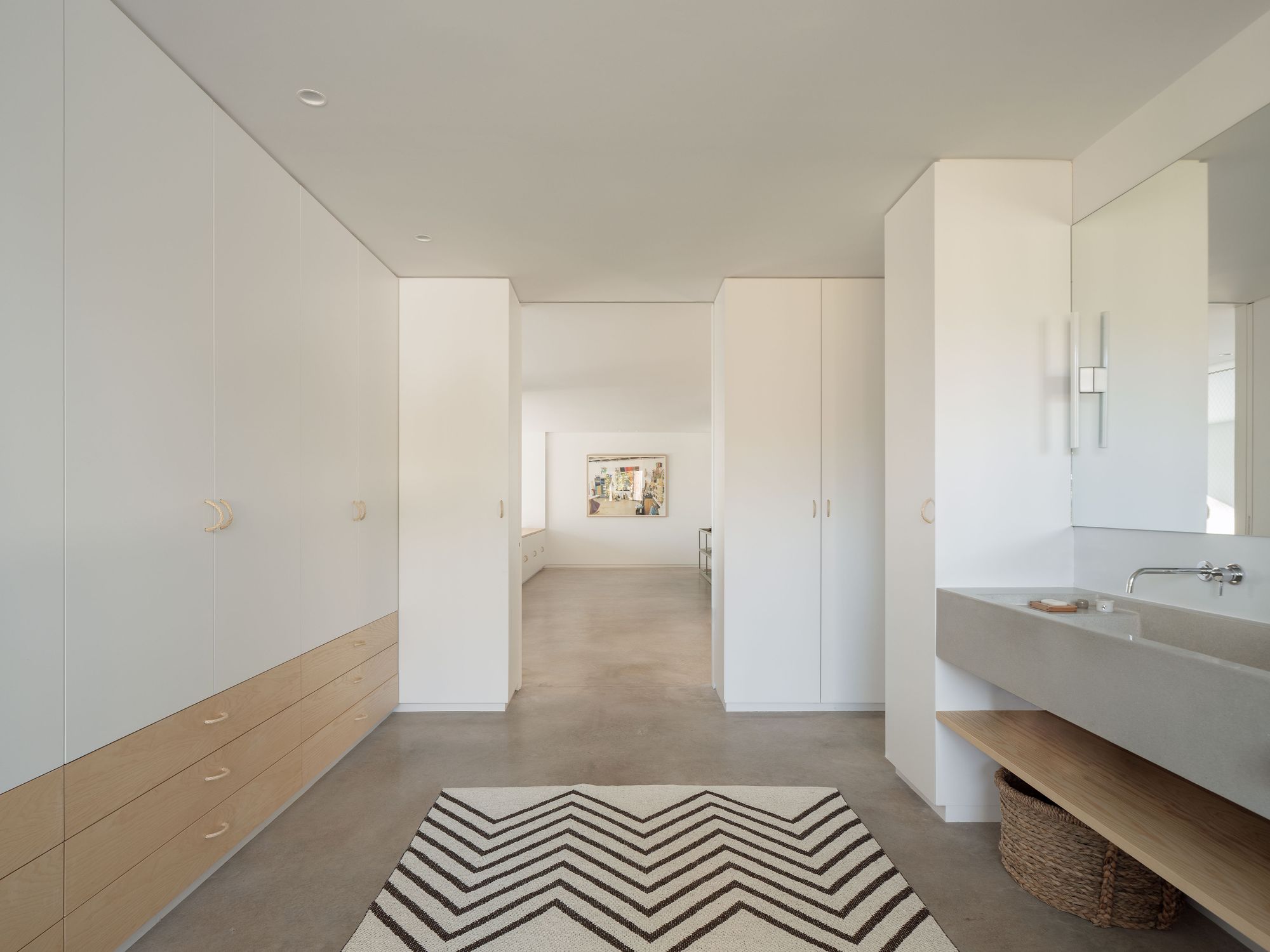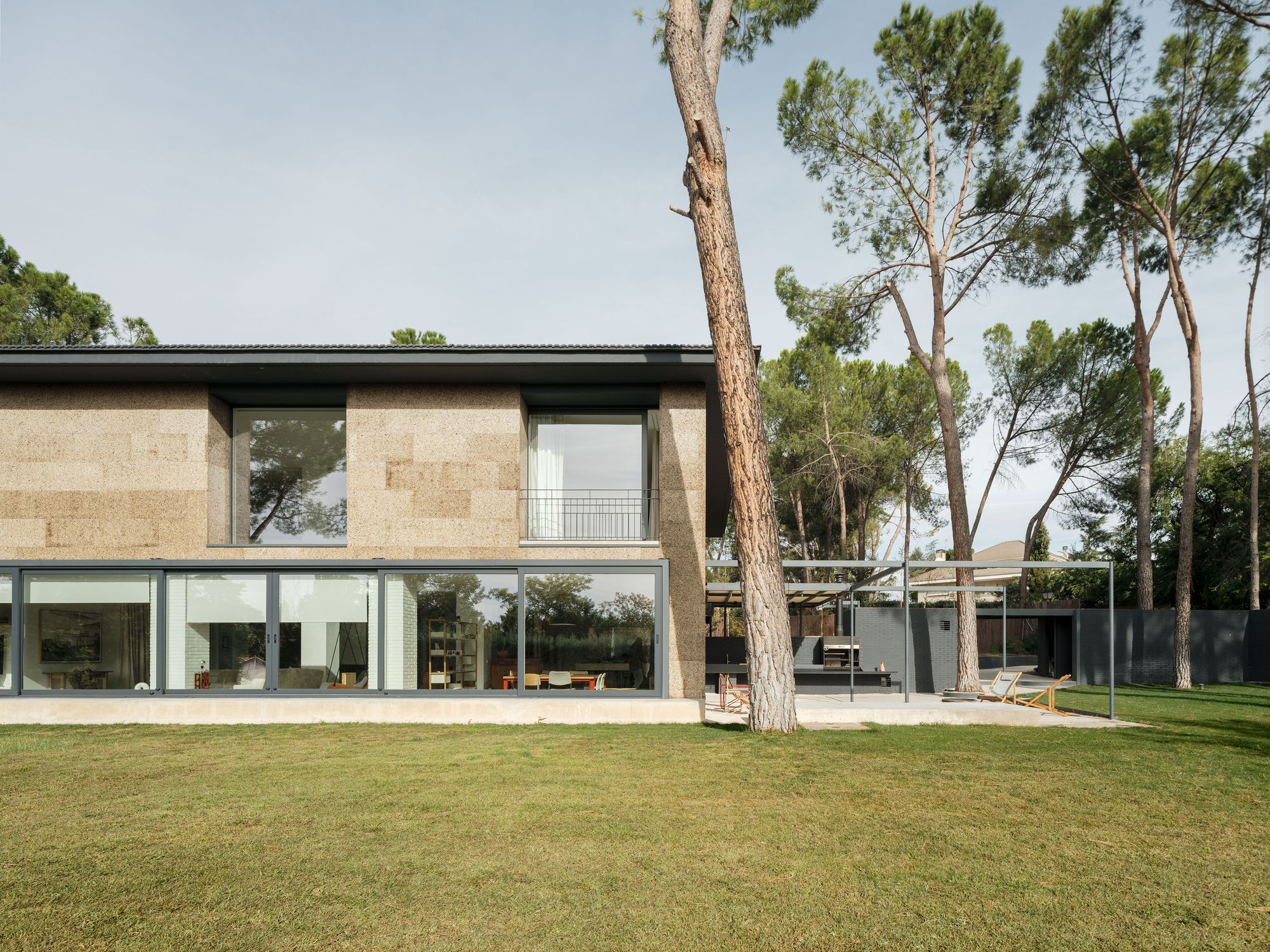Cork House is a minimal residence located in Madrid, Spain, designed by EME157. A Madrid-based house from the 1990s has received a contemporary update from architects, who have focused on incorporating the surrounding natural landscape into the design. The original house, built from red brick and salmon-coloured mortar with a hipped roof, included a double-height oblique porch and two auxiliary buildings. To blend the structure seamlessly with the surrounding pine trees, the architects decided to cover only the cube-shaped house’s facades with cork, which has similar properties to stone tiles but a warmer, lighter appearance.
To maximize solar capture and protection, the architects created different openings on each facade. The concrete bench running along the south elevation doubles as a basement and visually blurs the limits of the cube, while the interior combines few materials such as polished concrete floors, wooden tables and benches, stainless steel and white laminate in the kitchen, and plaster for showers and bathtubs. A sliding cork door splits the house into two sides. The first side includes the hall, stairs, kitchen, and service bedroom, while the other side features a single room with four columns and a double-height ceiling, dividing the floor plan into six quadrants. The sliding cork door can create different relationships between the server and served spaces depending on the time of day and needs.
A glass-enclosed passageway on one side of the cube leads to the old garage, which has been transformed into a multipurpose room. The upper floor features a hall that doubles as a study, work, reading, and rest room with access to the master bedroom through a dressing room. Two daughters’ bedrooms also offer access to a shared bathroom. Outside, the landscaping renovation preserved the pre-existing grass and pine trees while extending to the lower platform dedicated to the swimming pool. The expansion of the interior grid to the exterior forms four more quadrants, some covered, others uncovered, embraced by the concrete bench and the brick wall.
Photography by Luis Díaz Díaz
